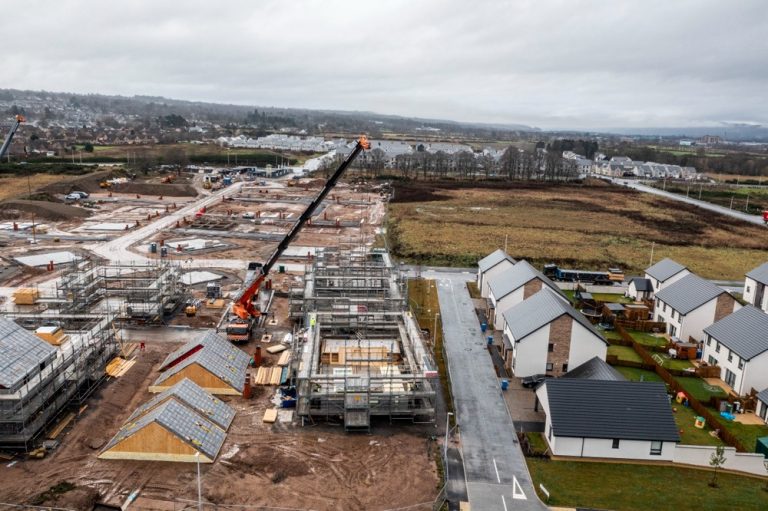Timber Frame Construction Gaining Ground in UK Housing Crisis
As the UK grapples with a significant housing crisis, timber frame construction is increasingly being highlighted as a viable solution. Known for its energy efficiency and speed of delivery, timber frame construction is capable of addressing the urgent need for new homes while simultaneously reducing carbon emissions.
In Scotland, timber frame construction has long been the norm, with around 90% of new builds utilizing this method over the past four decades. In contrast, only a fraction of homes—less than 10%—built in England employ timber frames. In 2022, approximately 190,000 homes were constructed across the UK, with about 40,000 of those being timber framed. A staggering 25,000 of these were in Scotland, while England contributed fewer than 14,000, with Northern Ireland and Wales collectively accounting for just over 3,500.
However, recent data from the National House Building Council (NHBC) indicates a growing acceptance of timber frame construction across the UK. The market share for timber has risen from 19% in 2015 to 22% in 2021, with projections suggesting that this could increase to 27% by 2025.
This shift in perception is supported by several advantages associated with timber frame construction. Benefits include the potential to reduce build programmes by up to eight weeks, significant cost savings due to lower labour requirements, improved energy efficiency, and a reduction in construction waste and carbon emissions.
The Structural Timber Association (STA) is playing a crucial role in promoting these benefits through its newly launched Time for Timber Hub. This online platform provides resources and information for those interested in adopting structural timber in their building projects. The STA is also developing a series of ‘How To’ guides to assist builders in transitioning to timber, which were showcased at the recent Offsite Expo in partnership with various manufacturing members, including Kirkwood Timber Frame.
Andrew Carpenter, CEO of the STA, emphasised the urgent need for change in the construction sector. “The Government has pledged an ambitious target to build 1.5 million homes over the next five years,” he stated. “Our industry must embrace new sustainable methods to achieve this goal of 300,000 new homes each year. Major housebuilders are increasingly recognising the benefits of structural timber.”
Kirkwood Timber Frame, an Aberdeen-based company, has reported a rise in demand for its timber products in England, although some reluctance persists among professionals in the region. Malcolm Thomson, the company’s managing director, noted that misconceptions about timber construction often stem from outdated views.
He stated, “Research indicates that much of the negative feedback relates to challenges faced decades ago. The timber frame sector has evolved, and its modern applications can address these past concerns.”
With the planning process increasingly focused on net zero targets, the demand for sustainable housing solutions continues to rise. Thomson believes timber construction can play a significant role in unlocking development opportunities, particularly as Homes England funding becomes linked to pre-manufactured values.
Addressing additional concerns, Thomson reassured that timber frame constructions are indeed suitable for taller buildings, with NHBC warranties available for timber homes up to seven storeys. The STA’s recent initiatives aim to enhance understanding and adoption of timber frame construction as a key player in meeting the UK’s housing needs. More information about the timber frame industry can be found here: https://www.structuraltimber.co.uk/ https://timefortimber.org/

